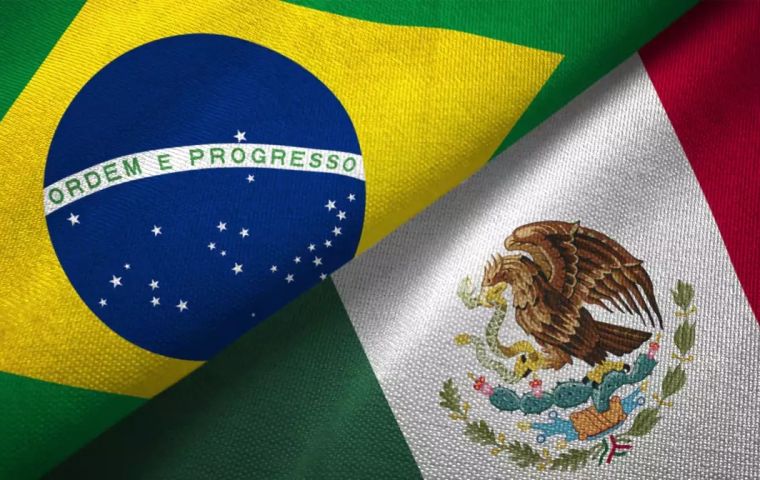MercoPress. South Atlantic News Agency
Brazil and Mexico looking ahead at significant economic growth
 Brazil has a favorable business environment in sectors such as technology, renewable energies, and agribusiness
Brazil has a favorable business environment in sectors such as technology, renewable energies, and agribusiness Only Brazil and Mexico would survive as world economic powers in Latin America by 2030, according to a study by PricewaterhouseCoopers (PwC) and Standard Chartered released last week. The two countries are expected to experience significant economic growth within the next six years.
The “The Long View: How will the Global Economic Order change by 2050?” report uses Gross Domestic Product (GDP) along with purchasing power (PPP) as key tools for its projections because they enable more equal comparisons between economies, regardless of currency fluctuations, it was explained.
PPP considers what the inhabitants of each country can buy with their local currency, and reflects a more accurate perspective on the true size and power of the economies under comparison.
Brazil and Mexico would thus make it into the top ten globally by 2030. With an estimated GDP of US$ 4.439 trillion, Brazil will rank eighth in the global ranking and will be the largest economy in South America. Mexico, meanwhile, will rank ninth with a projected GDP of US$ 3.661 trillion, the study showed.
This document also highlighted a diversification of these countries' economies, as well as improvements in infrastructure and development policies.
China, the United States, and India will be the three dominant economies in 2030. China will maintain its position as the world's largest economy, with a GDP of US$ 38.008 trillion; followed by the United States, with $23.475 trillion; and India, which will experience significant growth, would reach US$ 19.511 trillion, which underscores a shift in the balance of global economic power.
In the years ahead, India would overtake the United States to become the world's second-largest economy, thanks to a combination of demographic factors and economic reforms. The world's largest young population would boost India's economic development, which coupled with a more efficient tax system and the Bankruptcy Code, have paved the way for accelerated and sustainable economic growth.
Other countries such as Indonesia and Russia will also show significant growth. Indonesia will rise to fifth place globally and will stand out for a projected GDP of US$ 5.424 trillion, mainly due to the expansion of its industrial sector and an increase in domestic consumption.
Traditionally strong economies such as Germany and Japan will continue to be at the top of the list, albeit with more moderate growth rates compared to those of the emerging economies.
This outlook reflects global economic dynamism and the opportunity for investors and policymakers in Latin America, as well as the rest of the world, to understand and adapt to these changes, ensuring sustainable and equitable development for their populations in the decades to come.
By 2050, the world's most powerful countries would be, in the following order, China, the United States, India, Indonesia, Germany, Japan, the United Kingdom, Brazil, France, and Russia.
Brazil is consolidating its position as the preferred destination for foreign investment in Latin America, thanks to its dynamic economy, large domestic market, and solid incentive policies for foreign capital. The Kearny 2024 ranking highlights Brazil's favorable business environment in sectors such as technology, renewable energies, and agribusiness.




Top Comments
Disclaimer & comment rulesCommenting for this story is now closed.
If you have a Facebook account, become a fan and comment on our Facebook Page!